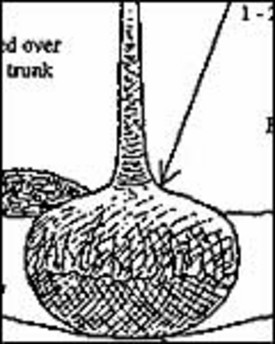 |
||
|
|
New Trees – Water once a week, regularly, during the first season, with l0 gallons of water. More for large trees. Pour the water down the trunks so it goes into the root ball, not along the top of the ground. In addition, whenever the leaves droop down or it is very hot, water again and mist the tops with the hose. Do not fertilize the first year except as for shrubs below.
New Shrubs – Water once a week the first summer with 5 to l0 gallons of water for each depending on the size of the bush. Take care to get the water under any mulch, which absorbs a great deal of moisture and robs the soil below. Pour water right down the stems so it goes into the root ball, and does not run off on the ground. During very hot sunny days, SPRAY the tops and water lightly in addition to the weekly deep watering. Do not fertilize the first year, except possibly for half strength liquid fertilizer at planting time, or plant rooting hormone additives one can use. Fertilize normally the second year in the spring.
New Sod – If Installed During Summer: Water daily for the first three weeks. Thereafter water twice weekly for a few weeks. Finally, water once a week with one full inch (1") of water during the season. When the weather is very hot or very dry, return to the twice weekly schedule.
If Installed During Spring Or Fall – Water daily but don’t let it remain soggy and soft. If cool and rainy, water two or three times weekly, until the grass is established, which takes about 2 to 3 weeks. Set the sprinkler to this schedule… do not water daily after the grass is established. Stop watering in early October.
 |
||
|
|
Fertilize, spring and around Labor Day with 10-6-4 or equal – For a lusher, greener lawn, fertilize a third time in late June. (Some people give a fourth fertilizing in November with an organic fertilizer for an earlier greenup in Spring, but the effect does not warrant the extra expense.)
Lime – Test the soil, and apply lime if the soil PH is below 6. Once the PH is corrected to 6.5, lime is usually needed only every 2nd or 3rd year.
Wood Chips and Bark Mulch – Put a large mulched circle over the roots, but do not mound bark mulch up around the trunk of trees. Trees and shrubs grown under mulch develop stronger roots and are healthier. However mulch should be no more than 2-3 inches total or plant health can suffer. Check depth before paying for more mulch each spring. A raking and a new thin top dressing of new chips will look as neat.
Most Transplant Death is the Result of Too Little, Too Much or Erratic Watering – Check the soil moisture by digging a hole 6 inches deep and feeling it. If it’s cool and moist, wait. If it’s dry, soak the plant. To check quickly, plunge a trowel into the soil and bend it back.
Credit: Mother’s Garden




























